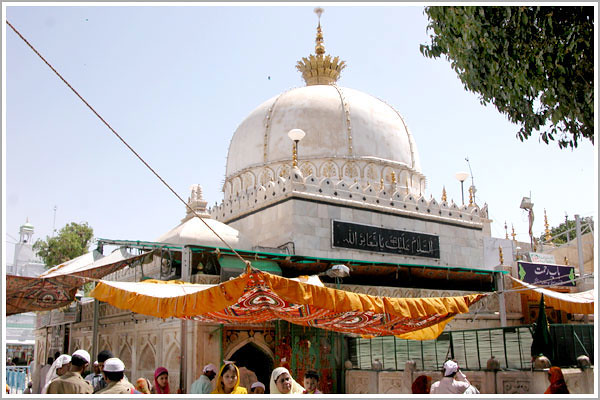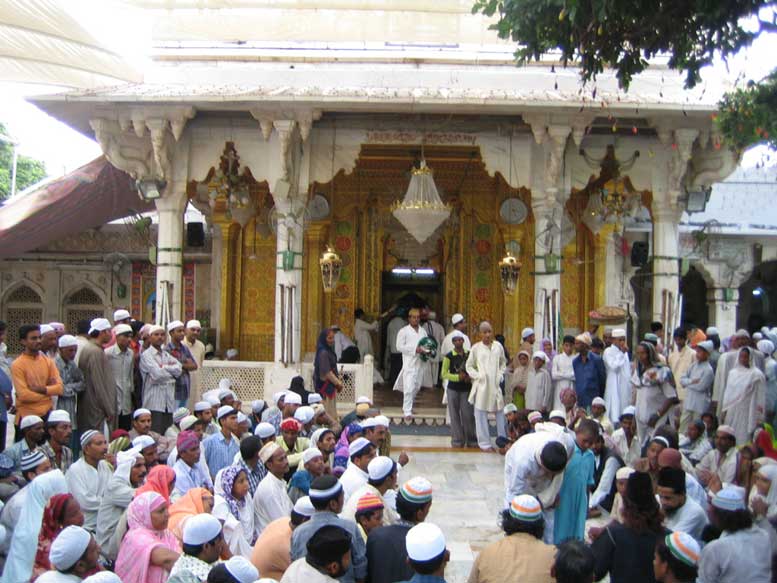Rajasthan, the ‘Land of Maharajas’ is home to magnificent forts and palaces, all of which are depictions of Rajput valour. The religious and cultural impact that Rajasthan as a state has had on India can be compared to no other. Whenever you plan a visit to Rajasthan, you might plan a trip to the vibrant cities of Jaipur, Udaipur or Jodhpur. Make sure you also add a slot to visit the stunning city of Ajmer. The minute you hear the word Ajmer, the Ajmer Sharif Dargah is sure to pop up in your head. As the name suggests, it is a dargah of Islamic significance, which was built in memory of Khwaja Moinuddin Chisti. It is typically a Sufi shrine and a hoard of devotees visit it to experience spiritual peace. Read on to know more about the Ajmer Sharif Dargah.
About Ajmer Sharif Dargah
Ajmer Sharif Dargah is the Sufi saint Khwaja Moinuddin Chisti’s tomb. It is considered to be one of the holiest places in the world by Muslims. If you happen to visit this dargah, you are sure to feel the power through the various hymns that are sung by the Sufi saints. Interestingly, Ajmer Sharif Dargah was built during the rule of the Mughal Empire by the ruler Humayun. Khwaja Moinuddin Chisti was an extremely pious saint who had devoted himself to alleviating the poor. The idea behind him doing this was to educate the masses about the importance of selfless service. The teachings of Khwaja Moinuddin Chisti are so popular that visitors literally throng the Dargah to pay respects at his tomb.
Also read: 18 Best Places to Visit In Ajmer

History of the Dargah
The rich history that is associated with the Ajmer Sharif Dargah will leave you awestruck. Apart from the brilliant architecture, get ready to witness and experience spiritual peace at the tomb of Khwaja Moinuddin Chisti. Khwaja Moinuddin Chisti was a Persian man who had settled in the region of Lahore which was also a part of India back then. As the story goes, the Sufi saint was believed to have locked himself up at this very place to offer prayers for the less fortunate.
Khwaja Moinuddin Chishti was almost 114 years old and his sacred mortal remains are what constitute his tomb. He breathed his last in the early 13th century and was believed to have had immense spiritual powers. Even today, you will come across stories which claim that any wish which is made in front of his tomb in Ajmer Sharif Dargah will get fulfilled.
Architecture of the Ajmer Sharif Dargah
Ajmer Sharif Dargah was built during the Mughal rule and thus depicts the typical Mughal style of architecture. You will find a number of courtyards and structures like the Jama Masjid, Buland Darwaza and Nizam Gate within the Dargah. When you enter the Dargah, you will pass through the majestic Buland Darwaza which is the grand gateway. The tomb of Khwaja Moinuddin Chisti itself, speak volumes of the magnificence of Mughal architecture. You will find the tomb under a dome-shaped chamber lined with silver railings. The surrounding pillars and walls are made out of marble which further adds an edge to the place.

Celebrations at Ajmer Sharif Dargah
When it comes to any religious place, the abundance of festivals has to be spoken about. You will come across a large number of visitors at Ajmer Sharif Dargah even if it is not the festival season. The illuminating lights, soulful qawwali singers and a positive spiritual vibe will transport you to another world altogether. A famous celebration that you should witness at the Dargah is ‘Urs.’ It is a 6-day long festival which takes place in the 7th month as per the Islamic lunar calendar. The Buland Darwaza is kept open on all 6 days during this celebration for 24 hours. The atmosphere at Ajmer Sharif Dargah is truly a sight to see at this point of time. Get ready to immerse yourself into the Islamic culture and feel spiritually rejuvenated.
Also read: These Best Things To Do In Ajmer are a must inclusion in your next trip
How to Reach Ajmer Sharif Dargah
You need not worry when it comes to the logistics of visiting Ajmer Sharif Dargah. It is one of the most prominent attractions not only within Ajmer but also in the whole state of Rajasthan. The nearest airport to Ajmer is the one in the capital city of Jaipur. To reach the Dargah quickly, you can take a bus journey from Ajmer Central from where the Dargah is hardly at a two-kilometre distance.

If you do not want to take up the bus journey, you can always hire a cab to visit Ajmer Sharif Dargah. Every other person in Rajasthan will be able to help you out with the routing to visit this place. The people of Rajasthan are really friendly to their visitors, so you need not worry about being directed to the wrong place. But, make sure that you have your bargaining skills on point to negotiate for best prices with your cab driver.
Useful tips
- It is a place of worship, so you will have to pay respect to the spiritual and religious quotient.
- Although there is no strict dress code to be followed here, modest clothing would be appropriate to visit the Dargah.
- Take care of your belongings when you visit Ajmer Sharif Dargah as a number of thefts have been reported.
Also read: Taragarh Fort in Rajasthan: A must-visit place to witness Ajmer’s pride

This was your complete guide regarding the Ajmer Sharif Dargah. You might already be dreaming about your vacation to Rajasthan. To help you plan the best vacation possible, you can reach out to us. We at Pickyourtrail offer tailor-made itineraries and live concierge service. Start planning your international tour package today. For further details, download the Pickyourtrail Travel App for Android and IOS. Happy vacationing!
Frequently Asked Questions
Ajmer Sharif Dargah is a revered Sufi shrine in Ajmer, Rajasthan, India. It houses the tomb of Sufi saint Khwaja Moinuddin Chishti.
The Dargah is a sacred pilgrimage site for people of all faiths. It is believed that prayers offered here have a high chance of being answered, and visitors seek blessings for health, prosperity, and fulfillment of desires.
Ajmer is well-connected by road and rail. The Dargah is located near the Ajmer Junction railway station and is easily accessible by taxis, auto-rickshaws, or buses.
Yes, the Dargah welcomes people of all faiths. People of all faiths are welcome to pay their respects and seek blessings.
Out of respect for religious sentiments, photography is usually not permitted inside the main shrine area. Photography may be permitted in certain areas outside the main shrine.


